In this blog series, we introduced primarily major feature updates and new functionality that will be part of TX Text Control X19. But with every release, we also implement smaller changes based on user feedback.
Keyboard Layout
TX Text Control supports language regions. Regions of a document such as a character, a word or complete paragraphs can be associated with a specific language. This is done automatically when the user switches the input keyboard, it can be set programmatically or using a dialog box.
In combination with TX Spell .NET, the selected language is automatically used as the proofing language. Also, this language is used for the hyphenation feature of TX Text Control and TX Spell .NET to hyphenate words in the desired language.
In previous versions (before X19), the input method (the actual keyboard) switches when the input position is changed into another language region, if a keyboard has been found in the available keyboards defined through the Windows settings. The following screencasts show the actual input method change in both versions.
Version X18
When the input position is changed into another language region, the keyboard layout is switched automatically.
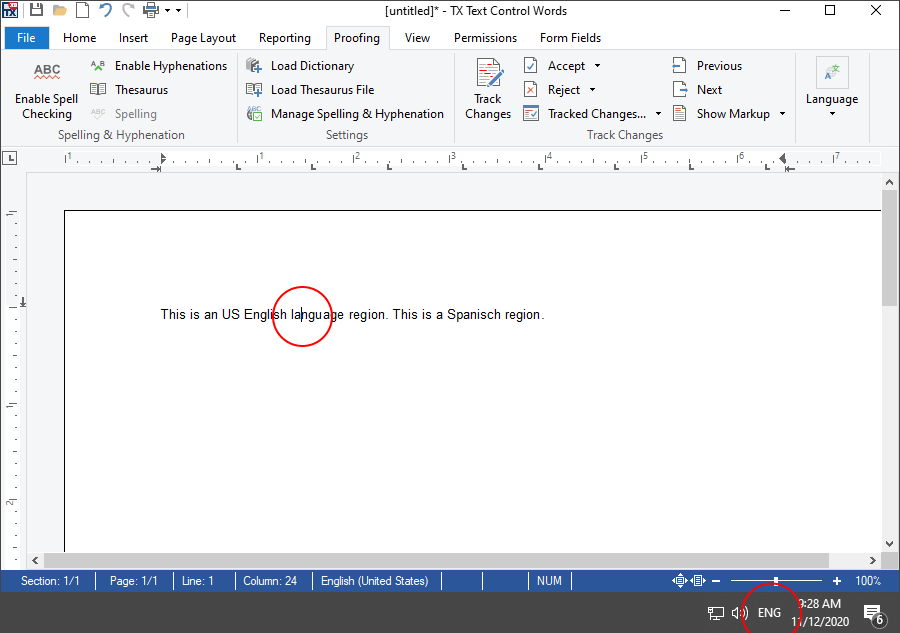
Version X19
In version X19, the input method is not changed when switching from an English language region to a Spanish region:
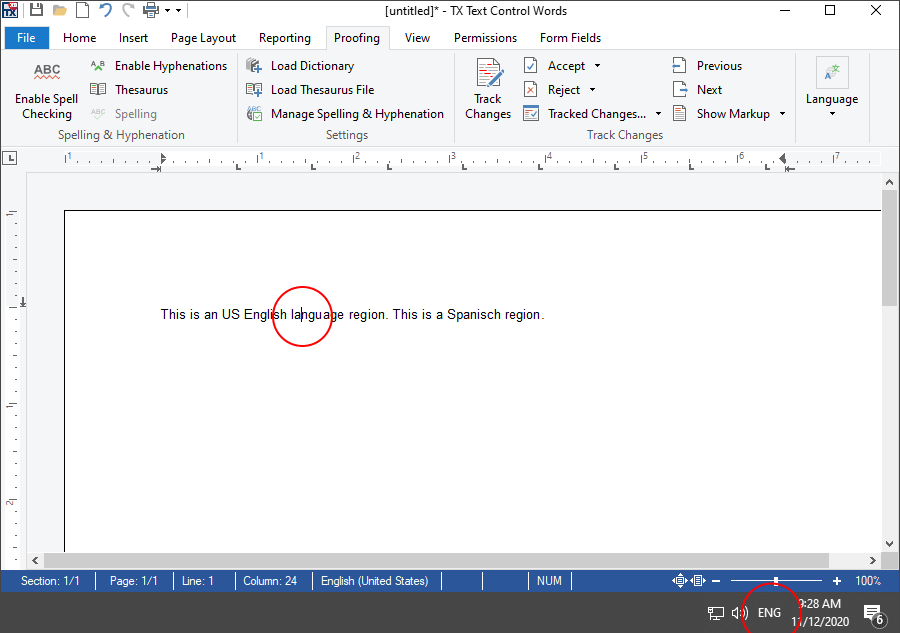
TX Text Control won't switch the keyboard layout for languages with a similar character set. For example German, English, Spanish or French. If an input method such as Chinese is enabled and a Chinese language region is added, TX Text Control X19 will still switch to that keyboard layout:
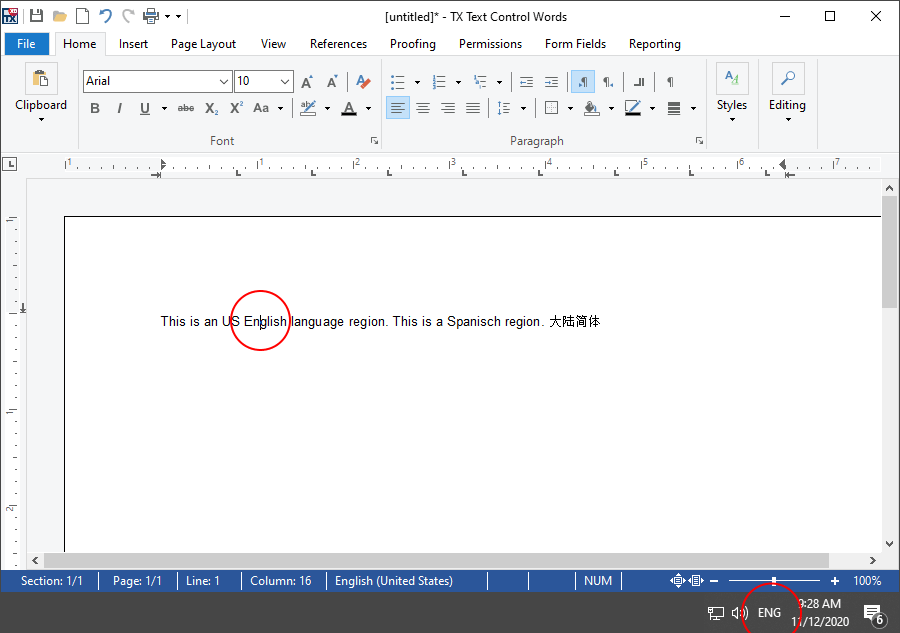
Spell Checking
Using TX Spell .NET, you can add extremely fast, highly reliable and very accurate spell checking to your TX Text Control based applications. Integrating TX Spell .NET into TX Text Control requires no code and can be easily connected to a TextControl instance.
TX Text Control itself triggers the event Spell
╰ TXTextControl Namespace
╰ TextControl Class
╰ SpellCheckText Event
Occurs, if the document's text has been altered and the spelling of the new text must be checked. event in case a word should be spell checked. If TX Spell .NET is connected, this event is handled internally and the spell checking is performed automatically. In case, a custom spell checker or a spell checking service should be used, this event can be used to check the misspelled words in order to return the positions of incorrect words to TX Text Control. Incorrect words are then underlined with a red zig zag line.
In previous versions, a word is already incorrect when starting to type the word:
Version X18
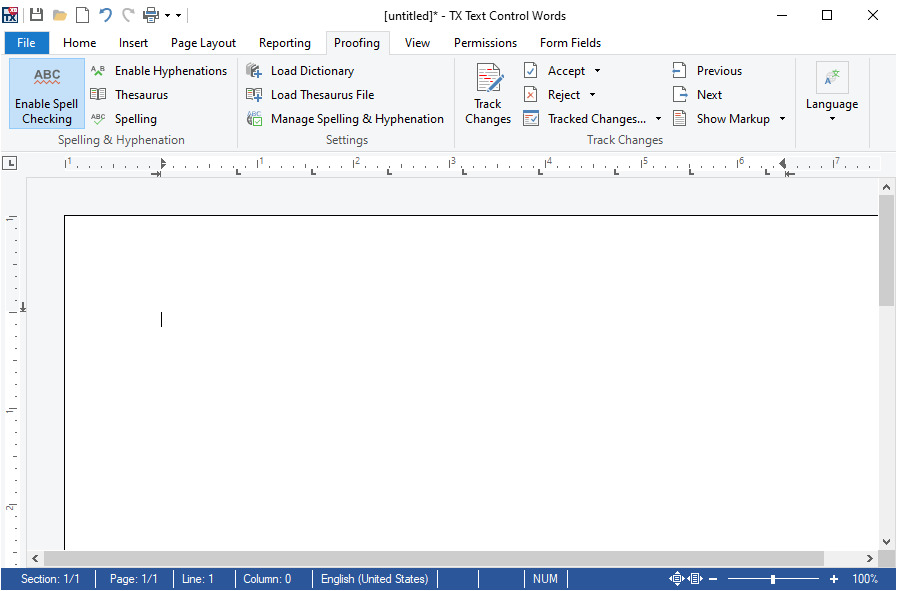
Version X19
In version X19, TX Text Control detects or predicts when a word is completed. That also includes situations when no delimiter (space, full stop, ...) has been added, but the caret has been moved to another input position or the focus is leaving the document completely.
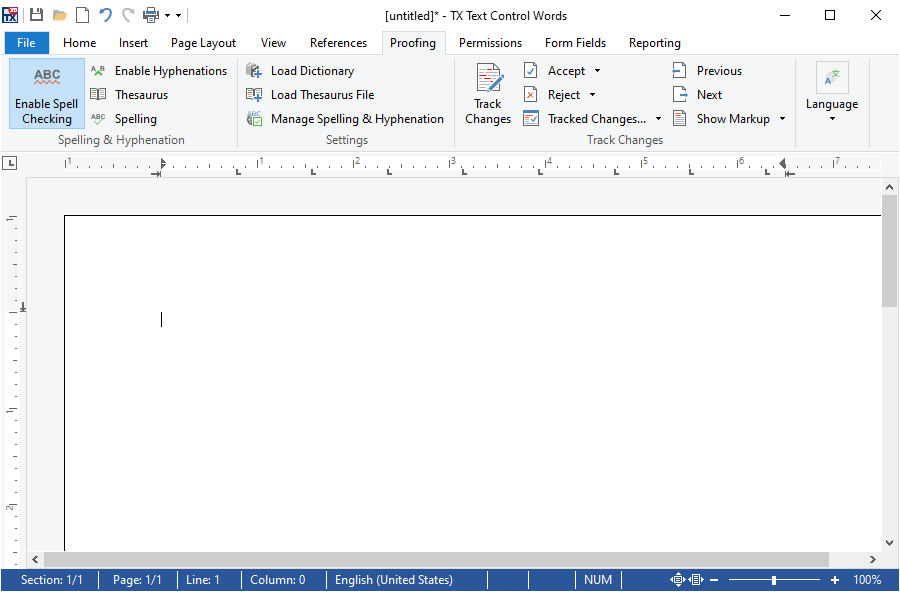
With the release of TX Text Control X19, we will also release a new version of TX Spell .NET with improved features such as a drastically reduced memory footprint for user dictionaries, high DPI dialog support, improved dictionary loading time and many other useful improvements.
So, stay tuned for more details about our upcoming releases.

